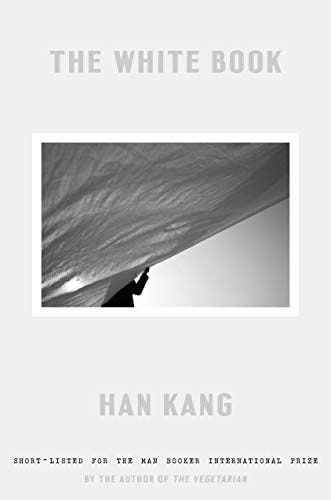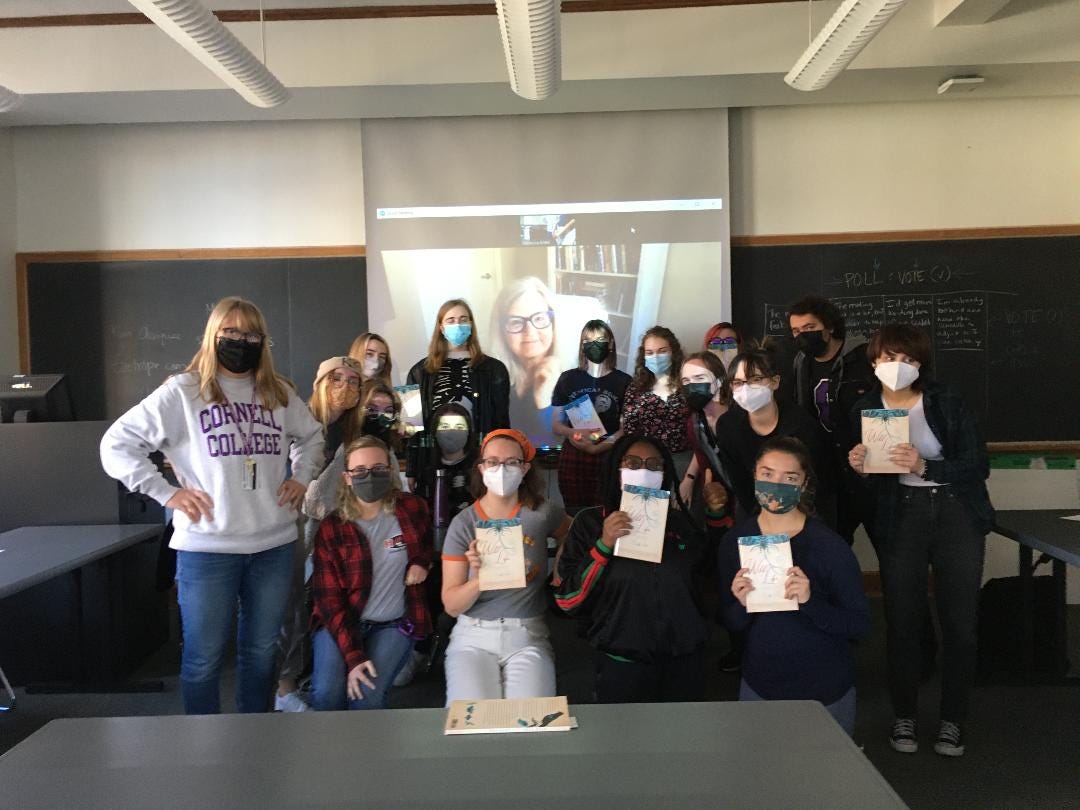Photo by Aaron Burden on Unsplash
In the spring, when I decided to write about white things, the first thing I did was make a list. from The White Book ~Han Kang
Hi friends,
In a few days, it will be the anniversary of my mother’s death. She died too young, when I was just thirty-one. I feel her absence always, but especially as I navigated the mix of exhaustion and joy of young motherhood. I often imagine an alternate reality for her, in which instead of dying of cancer at sixty-three, she lived three more decades. I have missed her advice and humor, the sound of her signature cackle.
Who I am, how I love, what delights and terrifies and drives me, have been every bit as much influenced by my mother’s absence this second half of my life as her presence. There’s subtext and significance to that. I feel the loss of her, yes, but also the negation of her. My mother’s absence has been the white space of my life.
Today friends, I’m very much thinking of absence and negation, and what role they play in crafting powerful stories and memoir. I wonder if some form of loss lives in the white space of all our stories, whether we’re aware of it or not.
Above, I quoted the first line of Han Kang’s quietly aching The White Book. A story told in the sparest of short, beautifully written chapters. I highly recommend it to anyone, but flash writers and readers especially.
Here is the list that followed: Swaddling bands / Newborn gown / Salt / Snow / Ice / Moon / Rice / Waves / Yulan / White bird / “Laughing whitely” / Blank paper / White dog / White hair / Shroud
The pieces culminate in a haunting and profound contemplation, a deeply moving story of family and loss. For the reader there is the sense, always, of what is left out, what has been lost, and what is unspoken.
What can flash writers learn from Kang’s approach? The individual pieces read, many of them, like prose poems, but collectively they form a story. What can you subtract from your work-in-progress? How does negation serve to heighten a sense of loss within the text? When you show the reader what didn’t happen, what does this tell them about what did? How loud is the unspoken? What is missing? What words hang in the air? And what crazy mathematics creates a feeling of more from the act of subtraction?
“There is a time in life when you expect the world to be always full of new things. And then comes a day when you realize that is not how it will be at all. You see that life will become a thing made of holes. Absences. Losses. Things that were there and are no longer. And you realize, too, that you have to grow around and between the gaps, though you can put your hand out to where things were and feel that tense, shining dullness of the space where the memories are.” ~Helen Macdonald
In my workshops, I have taught an exercise where the writer must create a whole flash out of showing us what didn’t happen. Where the couple didn’t honeymoon. Or what wasn’t said when they broke up. What the family didn’t eat that Thanksgiving.
Consider the power of the thing that doesn’t get mentioned. The mastodon in the corner. Family secrets. Why do we cover things up (literally and figuratively)? We writers are told to include lots of rich detail, but what if we don’t? What kind of story emerges from that spareness?
For you, the flash fiction writer, this can present an intriguing challenge.
Read “Sneakers in the Sand” by Dina L. Relles in River Teeth. And read The White Book by Han Kang if you’ve not already.
YOUR PROMPT
Make a list as Han Kang does on the first page of The White Book. Consider framing it around a certain, evocative color as she does. Begin in simplicity, not knowing where you’re going with this. Let your mind wander a little. Ten items.
Now, over the course of the next several days, set about writing short pieces based on these items. Be sparing with your words. Consider using negation. What didn’t happen? Who wasn’t in attendance? What don’t you remember? What loss lives in the white space? Challenge yourself to do much with very little.
The result may be some sad, strange beauty. The result may be unexpected. The result may be a little scary. Or magical. The result may be the beginnings of your next chapbook.
Your reader’s brain will seek out story and poetry and if you trust in that and your own inimitable voice enough, they will likely find it.
BEFORE YOU GO
Though substack would very much like me to (which is understandable), I have no plans for monetizing this newsletter. But if you have found my craft articles, writing prompts, and recommended readings useful, and you’d like to thank me in some small, tangible way, I will not object!
Photo credit: Rebecca Entel
I was delighted to virtually visit Professor Rebecca Entel’s Advanced Fiction Writing class at Cornell College recently! The students were so lovely and engaged. The best part was hearing them read their own breathless paragraph stories! I love doing these visits, so teachers, please hit me up! I’d be so honored.
UPCOMING “3 IN 90” LIVE VIDEO SEMINAR!
“Writing Cinematic Flash: Lessons from Film,” my next 90 minute workshop, will take place Saturday, December 3rd at 1:00 Eastern. Expect to come away with THREE fresh flash drafts. These are lots of fun. Some spaces remain and you may get more information and register HERE.
THANKS SO MUCH!
As always, thanks so much for subscribing and reading these monthly missives. And feel free to leave a comment. I’d love to hear how you fared with this month’s prompt or any of my prompts. Happy to answer any questions as well.
Much love,
Kathy








Oh wow. I love this. And I honestly love this 10 item list-making as a way to quickly outline a new idea. To try out the arc or final punch of a story. Kathy, every prompt of yours that I've tried has resulted in Something. If you wrote a whole book of just prompts, I would buy it immediately. Thank you :)
You brought in white what was hiding in the darkness of my mind. This is the most helpful post on substack this month. Will note the points down. Thank you!